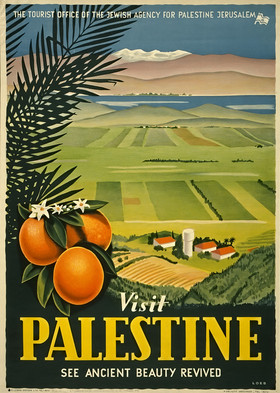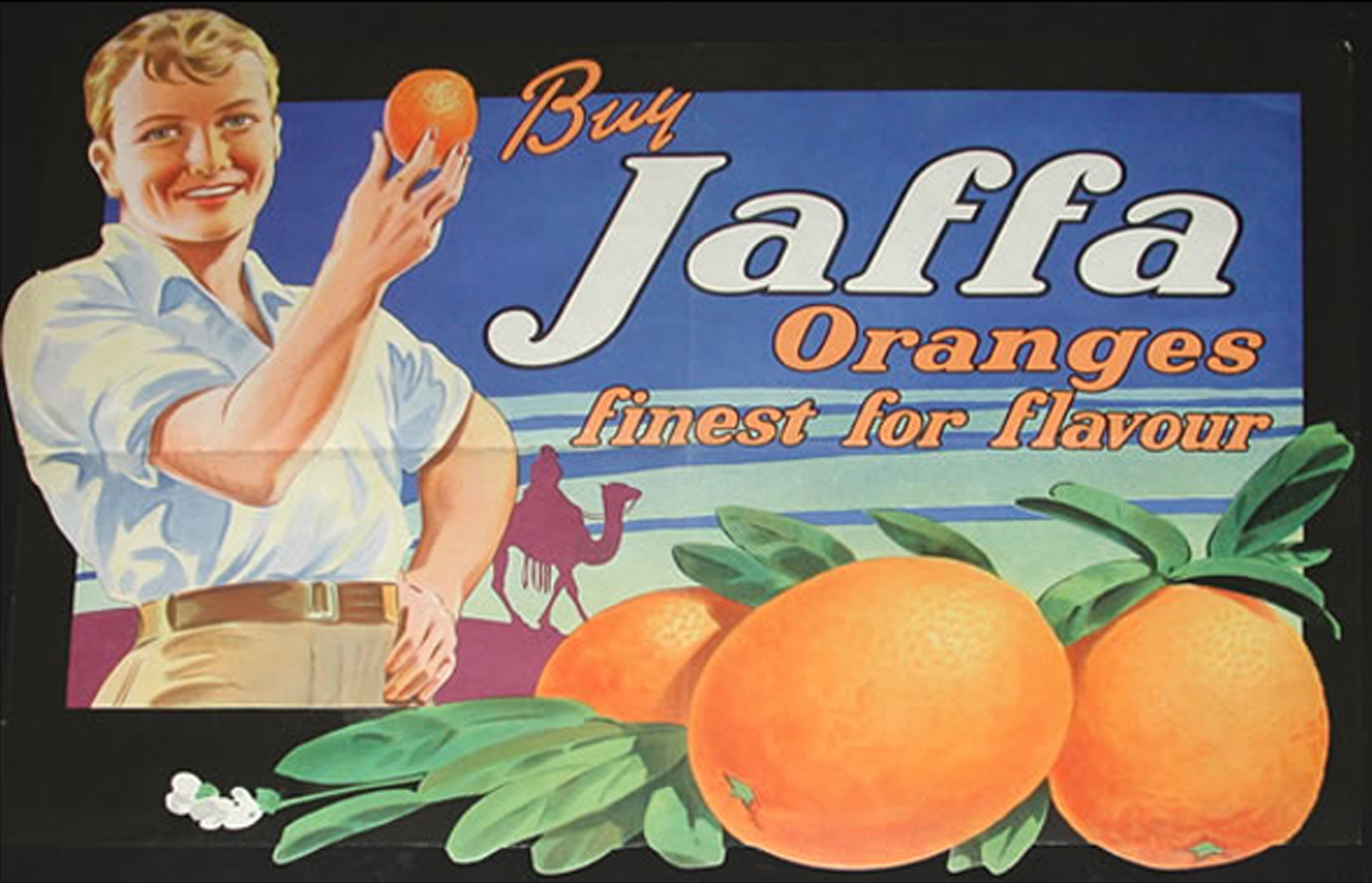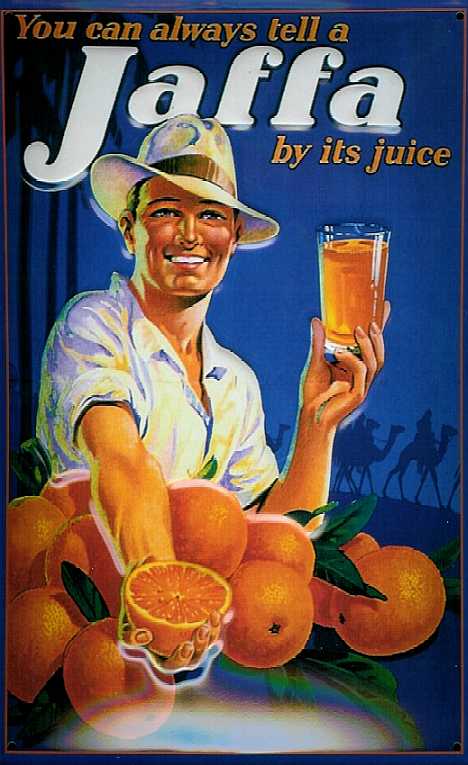Center of life in Jaffa revolved around the Clocktower. Photo from 1914. (Matson Collection from Palestine Remembered)
The Jerusalem versus Tel Aviv debate is a ferocious fight amongst young Israelis and internationals. Where is the best place to live? The sides are fierce and this conversation can end friendships.
Is Jerusalem really close minded and boring? Do you feel as if you are force-fed religion on the bus? Is Tel Aviv really only a vacation destination? Are people only concerned with knowing the hottest new restaurant before anyone else?
I've often engaged in these arguments, playfully, but stubbornly. Jerusalem is where it is at, I would claim. Jerusalem is full of pockets of artistic, avant-garde creation, I argue. Good food, wonderful people--you just have to know where to find it amidst the intense world of religion and politics that dominates daily life. But, Jerusalem is where life is most meaningful. Ramallah and Nablus don't exist in Tel Aviv--Tel Avivians live in a bubble and ignore the occupation. In Jerusalem, you can't overlook the toll of Israeli policies.
But more than anything, there is a certain magic to Jerusalem. The way that every building is constructed of white stones from the same quarry, it creates this blurring of past and present; the building you're walking by could be from 2015 or 1015. Those breezes that turn into the chill Jerusalem wind, which are a blessing during hot summer nights. The narrow streets, the winding pathways, and the shortcuts that end in stone stairs--it always feels as though Jerusalem has a secret. She's just waiting for you to discover her around the next corner.
However, it is a hard city. Only 18% of the Jewish population is secular, and for a non-religious woman, I feel that tension everyday. I have a Jerusalem wardrobe of loose, flowing, longer sleeved shirts, and longer skirts so as not to draw attention. I do not wear shorts in Jerusalem. Never. And if, one day, I decide to risk it, I feel eyes following me all day as I surreptitiously try to pull my shorts down lower.
For an activist, Jerusalem is constant duel between naive optimism and utter disillusionment and depression. You live it, you see the wall everyday (if you choose to notice it), you observe racism and ignorance constantly. But you also are immersed in a struggle that impacts the real lives of real people. Sending an email alert about an impending eviction or demolition of a home in East Jerusalem can feel like wielding a sword of justice. And one rude, racist, nationalist comment can feel like a punch in the gut. People walk quicker in Jerusalem. People push to get onto buses and trains as if every step is a battle between the aggressor and the aggressed. People have more frown lines. Or they simply ignore the conflict and hold to their belief that "It's all for the Good" and God has their back.
At the end of the day, I was struck with the feeling that even though I love Jerusalem, Jerusalem doesn't love me.
So here I am, a self proclaimed Jerusalemite living in Tel Aviv. But I'll wave my hands in the air and say, "It's not Tel Aviv! It's South Tel Aviv! It's North Jaffa!" And for those Jerusalemites who know the slight difference a few streets make will nod their heads in appreciation. "How's the beach?" They'll ask.
Jaffa is considered, since 1950, to be a part of the larger Tel Aviv district. However, it is a unique entity of its own.
Jaffa pre-1948 was a cultural and economic hub of the Eastern Mediterranean. It was the largest Palestinian city under the British Mandate. In the 1930s, Jaffa was famous for its oranges and exported them all over the world. Culture flourished: theater, arts, cinema, music, literature. The main newspapers of Palestine were published in Jaffa including Filastin and al-Difa’.
Sami Abu Shehadeh, a PhD candidate at Tel Aviv University, focuses on the history of Jaffa in the 19th and earlier 20th century. He writes about the impact of the establishment of the State of Israel on Jaffa and the local Palestinian residents. You can listen to him talk about it here or read about it here.
After the war in 1948, over 95% of Jaffa's Palestinians were displaced and most of Jaffa's (75%) Arab section were destroyed. Only a few neighborhoods of Palestinian Jaffa remain: al-'Ajami, the Old City, and small part of al-Mansheyyah. From 1948-1950, Palestinians were kept in al-Ajami and the neighborhood was ghettoized while the surrounding areas of Tel Aviv expanded and flourished to become the Jewish city on the coast. Furthermore, through application of the Absentee Property Law (passed in 1950), the Israeli government was able to confiscate homes and many Jaffa residents were unable to return home. Shehadeh writes that Jaffa is, "the story of the transformation of this thriving modern urban center into a marginalized neighborhood suffering from poverty, discrimination, gentrification, crime and demolition since the initial wave of mass expulsion in 1948 to the present day."
The military rule over the Palestinians within the 1948 borders was abandoned in 1966 and the Palestinians who remained (only 4,000 of the population of 120,000 Palestinians who had lived in Jaffa before 1948) became Israeli citizens. Overcrowding in Ajami, and the poor conditions, led to many Palestinians also moving to the nearby coastal neighborhood Jabaliya. The 1980s and 1990s saw "the Palestinian community... become an active and effective player in the life of their city." (Shehadeh)
Jaffa today remains a center for Palestinian life within Israeli borders. Already, I've heard more Arabic on the streets than I did all year in my Arabic class. Plus, the novelty of going to the beach everyday (only three minutes from my apartment!) is set against the backdrop of the warbling call to prayer from the nearby mosque.
Today, Jaffa is undergoing an intense process of gentrification. The Old City has been converted into a tourist destination, the old flea market has become a vibrant restaurant and bar district, and the Palestinian Ajami neighborhood is kept "out of sight out of mind" for the causal Tel-Avivian who comes South to have dinner and drinks.
Jaffa may not be Jerusalem, but as Sami Abu Shehadeh says, it is the "living heart of Palestine." It certainly isn't just Tel Aviv either.
Stay tuned! More adventures to come.






